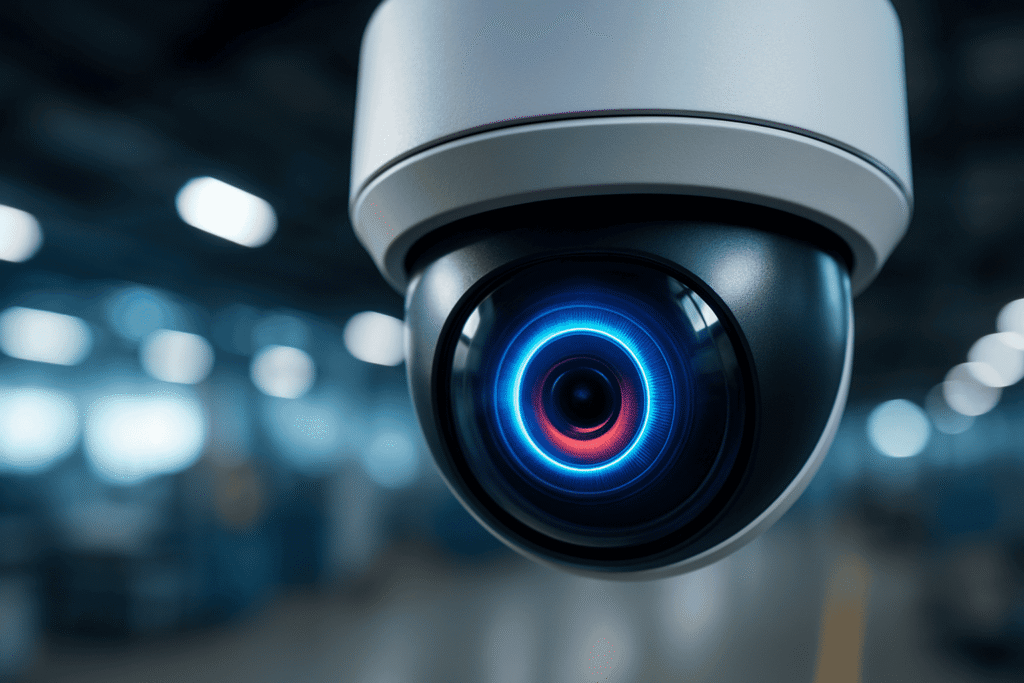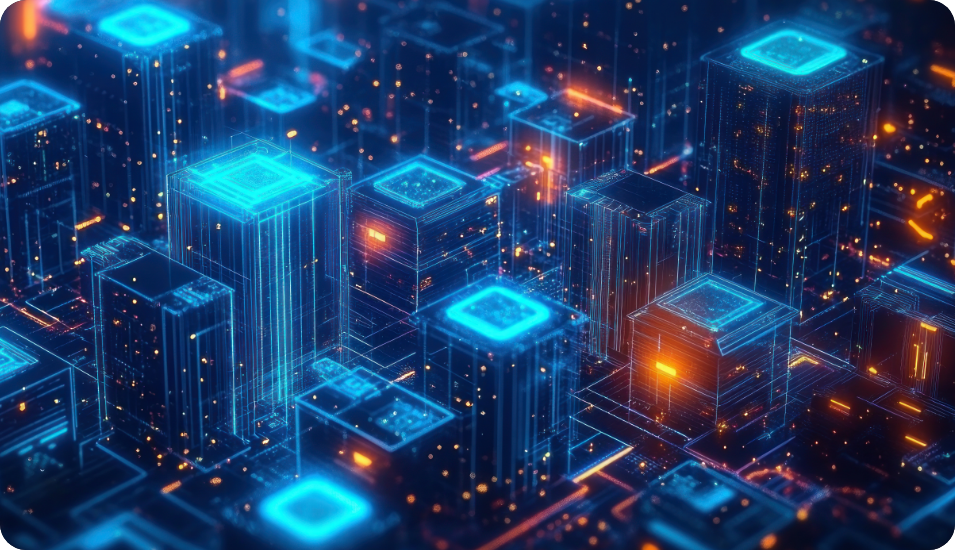Video analytics systems using artificial intelligence (AI) are becoming more and more popular in companies, public institutions, shops or airports. Unlike traditional monitoring, they are not limited to recording image. They can understand what they see – detect people, vehicles, analyse behaviours, warn about threats, and even generate reports.
In this article, we explain how the whole system works – from cameras to algorithms and equipment – and we explain the most important concepts and technologies in a simple and understandable way.
How does AI video analytics system work?
The AI system for video analytics can be compared to an “intelligent guard” who observes the image from cameras and makes decisions in real time. It usually consists of four main elements:
- CCTV cameras
- Processing device
- AI software
- User interface
1. CCTV cameras – Eyes of the system
The basis of each system is a camera – usually the so-called IP camera (a camera connected to the network). It can be a standard industrial camera or a modern camera with night vision or wide viewing angle. The image from the camera is sent live to the analysing system.
Good news: Most modern video analytics systems can work with existing cameras, without having to replace the entire infrastructure.

2. Processing device – Computing center
The image from the cameras must be analysed. This can be done in three ways:
- On the edge of the network (Edge Computing) – the image is processed locally, on a small computer on the camera (e.g. a special Jetson or Mini-PC device).
- On the internal server – the analysis is performed on a computer or server installed in the company building.
- In the cloud computing – the image is sent to the data center over the Internet, where the analysis operates.
Each of these solutions has its advantages:
Edge: speed, low latency, privacy (data does not leave the building).
Local server: greater computing power, control over data.
Cloud: scalability, ease of implementation and management.
The system can also be hybrid – part of the analysis is done locally, some in the cloud.
3. AI software – Brain of the system
The most important element of the system is artificial intelligence, which analyses the image from cameras and makes decisions.
What can detect such a system?
- People, vehicles, animals.
- Movement in forbidden zones.
- Dangerous behaviour (e.g. fights, falls).
- Crowds, queues, no protective helmet, etc.
How does it work?
Video analytics systems based on artificial intelligence transform camera footage – which was previously passively recorded – into active operational information. Simply put, AI software analyzes the video stream frame by frame, recognizing objects, movements, events, and anomalies in real-time.
The operation process of such a system typically looks as follows:
- Image acquisition – The camera provides a video stream that is decoded and passed for analysis. This can be local or remote analysis (on a server or in the cloud).
- Preprocessing – Each video frame (e.g., 25 frames per second) is converted into a series of numerical data. The system may first stabilize the image, filter out noise, recognize the background, etc.
- Object detection and segmentation – On frames, the AI system detects and locates objects (e.g., people, vehicles, machines, packages) and assigns them to classes. It uses so-called deep learning models, such as YOLO, SSD, EfficientDet, which have been previously trained on large datasets1.
- Object tracking over time – AI analyzes the continuity of object movement between frames, creating trajectories (e.g., person A moved from zone X to Y in time Z). This makes it possible to detect events – such as entry into a forbidden zone, production line stoppage, or staying too long in a given area.
- Contextual analysis and business logic – Based on detected objects and events, the system can trigger specific rules or alerts (e.g., missing helmet, machine downtime, unusual movement in warehouse). It often works in real-time, reacting within milliseconds.
- Visualization and data export – Analysis results can be presented in the form of dashboards, alerts, reports, or exported to other systems (ERP, MES, VMS) through API.
Importantly, modern AI systems don’t rely on simple motion detection like traditional cameras – but can understand context: distinguish a person from a shadow, recognize whether a product is damaged, or whether an operator is performing a task correctly. They also learn specific environments – such as production halls or warehouses – which increases their accuracy and resistance to false alarms.
AI “watches” every frame of video, recognizes objects, tracks them over time, and draws conclusions. Everything happens automatically, often in real-time (meaning immediately, without delays). It’s somewhat like the system having its own “eye” and “brain” – it looks at the image and understands what’s happening.
4. User interface – System management dashboard
The last element is the dashboard through which the user sees and manages the system:
- Live camera view.
- List of detected events and alarms.
- Possibility to set rules.
- Reports and statistics.
The interface can be available via the browser, phone, and integrated with VMS (Video Management System).
Does it work with my infrastructure?
Yes! Modern video analytics systems have been designed to work on the basis of existing cameras and networks. In many cases, you just need to add one analysing device and implement AI software. You do not need to replace all monitoring devices – which means lower costs and faster start.
Summary
Video analytics solutions using artificial intelligence are currently one of the most effective tools supporting safety, operations and management in real time. By combining the image from cameras with intelligent software, it is possible not only to record what is happening – but understand the situation and react quickly.
What is particularly important, these systems:
- work automatically, without the need for constant human supervision,
- they are able to analyse the live image, detecting specific events and behaviours,
- can be scaled – from several cameras to hundreds.
They allow you to adapt to the industry – other rules will work in a production plant, others at a housing estate, and others in a retail store.
Thanks to the possibility of working at various levels (edge devices, internal servers, cloud), you can choose architecture for budget, privacy requirements and existing infrastructure. In many cases, you do not need to replace cameras – all you need is to integrate the AI powered image analysis software with the existing hardware, which significantly reduces the costs of implementation.
As a result, we get an intelligent supervision system that:
- increases the safety of people and property,
- supports daily operation,
- reduces the load on protection teams,
- provides valuable data for further analysis.
AI video analytics are not the future – it is a technology that is already changing the way organizations monitor and manage security and processes.

